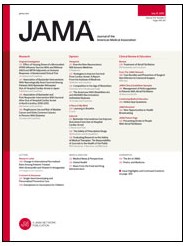April, 2003 - Metabolic Syndrome X is the term used to describe a group of heart disease risk factors, including high levels of abdominal fat, bad cholesterol, high blood pressure, and abnormal glucose metabolism. The syndrome, also known as Insulin Resistance Syndrome, is thought to run in families with a history of type 2 diabetes. It is a syndrome that can kill.
Excessive caloric intake is thought to be one of the root causes. Consequently, physicians have prescribed weight loss, exercise and a healthy diet to combat it. A new weapon might eventually be added to the arsenal: consumption of Tegreen, a tea polyphenols product containing in excess of 65 percent tea catechins, derived from the green tea leaf. The results of a new animal model study reveal the benefits of Tegreen in improving lipid and glucose metabolisms, enhancing insulin sensitivity, and balancing the metabolic rate of fat deposit and fat burning.
The authors of a new study, "Tegreen Improves glucose and lipid metabolism in obese rats that have features similar to Metabolic Syndrome X," are Hong Yu, Zhigang Zhu and Weiti Yin, all of the Pharmanex Beijing Pharmacology Center, Beijing, China; and Jia-Shi Zhu of Pharmanex, LLC, Provo, UT. Dr. Jia-Shi Zhu will present their findings at Experimental Biology 2003, a meeting sponsored by the American Physiological Society, being held April 11-15, 2003, at the San Diego Convention Center, San Diego, CA.
Methodology
Tegreen powder, containing >97 percent tea polyphenols or >65 percent tea catechins, was used with 44 female Sprague-Dawley rats, weighing 190-210 g. A high-dose treatment was developed using Tegreen powder (0.75 g) dissolved in 100 ml of solution for a 7.5 mg/ml suspension. For a low-dose treatment, Tegreen power (0.25 g) was dissolved in solution to make a 2.5 mg/ml suspension.
Continue Reading Below ↓↓↓
The subjects were housed with a 12-hour light/dark cycle. After being acclimatized to their surroundings, they were randomly placed in one of four experimental groups. Rats in a normal diet placebo group were fed normal rat forage. The other rats were fed a high-calorie diet, including a high-calorie diet placebo, for a period of 56 days. Two treatment groups were given Tegreen at a dose of 25 or 75 mg/kg. Following fasting of ten hours, orbital blood samples were collected to examine fasting serum glucose, serum triglycerides, plasma insulin, and plasma glucagon. Glucose insulin index and ratio of insulin:Glucagon were calculated. Abdominal adipose tissue was isolated and weighted.
Results
The researchers made the following observations:
Establishment of Metabolic Syndrome X: Rats fed the high-calorie diet significantly increased their weight of abdominal adipose tissue and ratio of Insulin:Glucagon, indicating increased adipose lipogenesis and deposit, and decreased fat burning. The glucose-insulin index was lowered by 13 percent in rats on the high calorie diet, indicating reduced insulin sensitivity or insulin resistance and excessive visceral adipose accumulation. These metabolic changes suggested that rats on the experimental diet developed Metabolism Syndrome X.
Decreases in fasting blood glucose: After the eight-week Tegreen treatment, fasting blood glucose was decreased significantly (by 21.5 percent and 15.7 percent, respectively) in rats given Tegreen at a dose of 25 or 75 mg/kg.
Changes in fasting plasma insulin (Ins): Fasting plasma insulin was decreased by 40.7 percent in rats given Tegreen at a dose of 25 mg/kg, and by 31.2 percent at a dose of 75 mg/kg.
Increases in glucose-insulin index: the insulin index was increased significantly, 31.4 percent and 24.8 percent, respectively, in rats given Tegreen, suggesting enhanced insulin sensitivity by Tegreen treatment.
Decreases in fasting serum triglycerides (TG): fasting serum TG was significantly decreased (31 percent and 54.3 percent, respectively) in rats receiving the test product.
Decreases in the weight of abdominal adipose pad (fat) relative to body weight: Using an abdominal adipose pad index (API), measurements showed significant decreases of 11.9 percent in those consuming 25 mg/kg and 21.6 percent in those consuming 75 mg/kg, indicating decreased visceral depot fat.
Changes in fasting plasma glucagon (Glca): Fasting plasma glucagon was increased slightly -- 13.1 percent -- at a dose of 25 mg/kg, and by 22.6 percent at 75 mg/kg. Decreases in ratio of insulin to glucagons (Ins/Glca): Ins/Glca was significantly decreased (49.9 percent) at a dose of 25 mg/kg, and by 43.1 at a dose of 75 mg/kg, suggesting increases in fat burning and decreases in visceral fat deposit.
Conclusions
Continue Reading Below ↓↓↓
This study reveals that oral administration of Tegreen is capable of improving glucose and lipid metabolisms in an obese rat model induced by a high-calorie diet. The close association of disordered lipid metabolism with other metabolic disturbances may be the unique feature of Metabolic Syndrome X. This study clearly shows that Tegreen intervention can significantly decrease visceral fat depot and increase the insulin's sensitivity, presumably touching one of the pathological root causes of this potentially deadly syndrome.
Source: American Physiological Society










